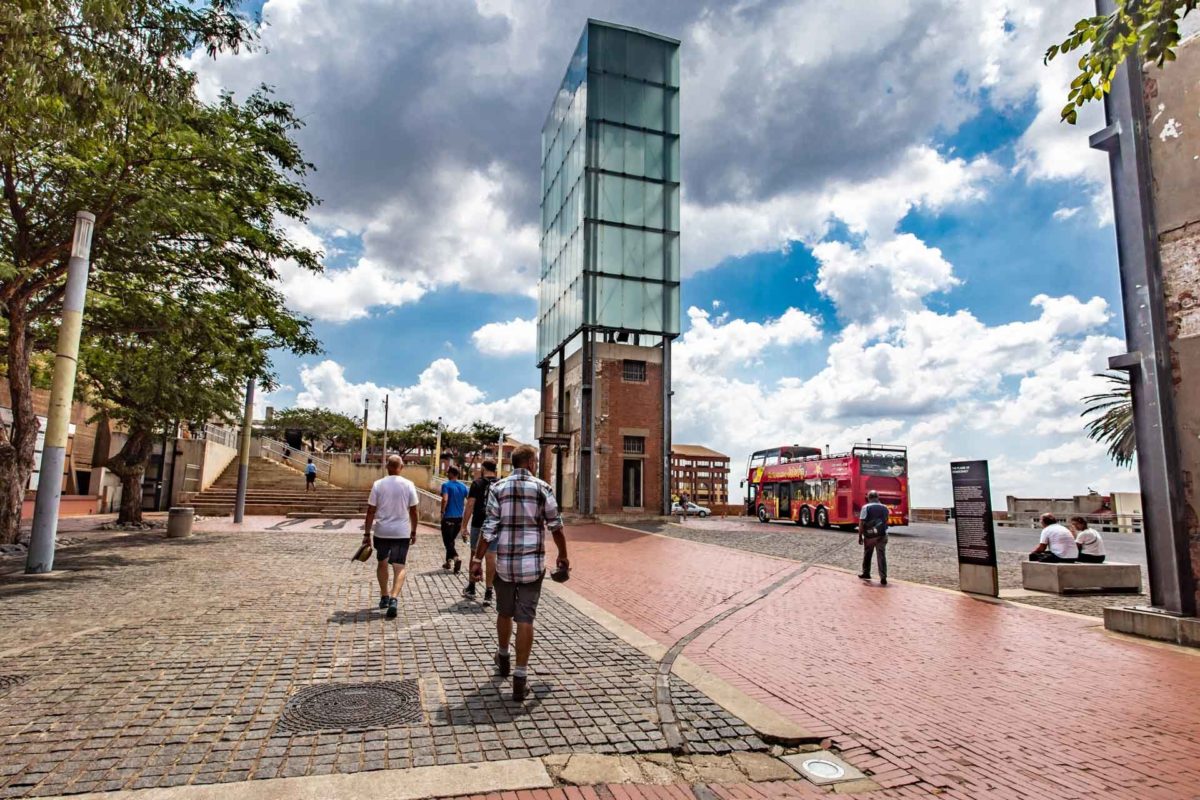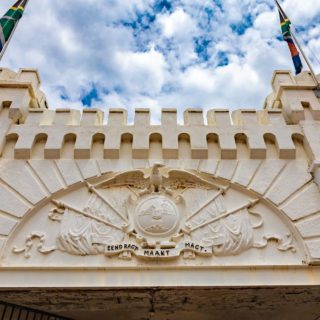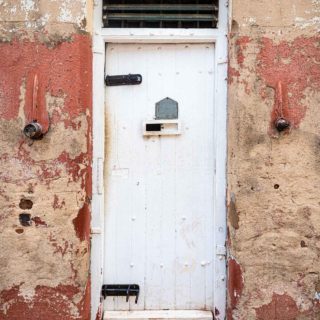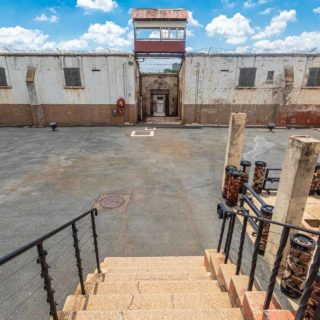Architecture
The oldest building at Constitution Hill is the Old Fort, where today's grass-covered ramparts and simple exterior belie the artillery that was once mounted on the rampart walls and the atrocities that occurred within them. These walls are enormously thick and strong, built against attack from the outside and escape from the inside.
The Fort was designed by Netherlands-born state architect Sytze Wierda, and took three years to build at a cost of £40 000.
On 27 November 1964, amid a great deal of controversy, the Old Fort was proclaimed a national monument. The Johannesburg City Council opposed the motion, believing that the fort’s historical significance was scant and the property more useful for Hillbrow’s swelling residents. But those who supported the fort’s status as a national monument argued that it was the most important remaining structure from the Zuid-Afrikaansche Republiek, the Johannesburg equivalent of Cape Town’s Castle. The latter succeeded, though not without infuriating the City Council.
Today, Constitution Hill – the whole precinct – is a provincial heritage site.
Like the Old Fort, the other buildings in the precinct were designed to be purely functional. The red face brick of Number Four and the remaining staircases of the Awaiting Trial Block are reminiscent of the utilitarianism of many of South Africa’s government buildings over the years. The Women’s Jail, however, stands in contrast to this. Although it, too, is made predominantly of red brickwork, its internal atrium is striking in the light and space it affords, until one notices the bars on its windows.
The atrium is built according to a panopticon or round-house design, the creation of Jeremy Bentham, an 18th-century penal reformer. Bentham maintained that prisoners should be under constant surveillance by prison authorities, best facilitated by such a design.
Surrounded by iconic sites of past atrocities, the Constitutional Court is a site of great political significance at Constitution Hill. It also boasts great architectural significance, with virtually every aspect of its design imbued with symbolism. The foyer of the court is a spacious, light-filled area punctuated by slanting columns, an architectural metaphor for lekgotla, the meeting place in African villages in which legal disputes are resolved, often beneath a tree. Coloured mosaics adorn the pillars and the concrete roof has slots designed to create moving areas akin to dappled sunlight filtering through leaves.
The court chamber is more austere and has a low-lying ribbon of glass that emphasises the transparency of its proceedings. The court is structured so that the judges are seated on a par to those in the gallery. Its brick walls originate from the demolished Awaiting Trial Block as a symbolic act of recreating a site of democracy out of a site of oppression. These bricks were also used to create the Great African Steps that divide the old stone wall of Number Four and the court’s glass frontage.
For more information, please read the story of the Constitutional Court.

 +27 11 381 3100
+27 11 381 3100







